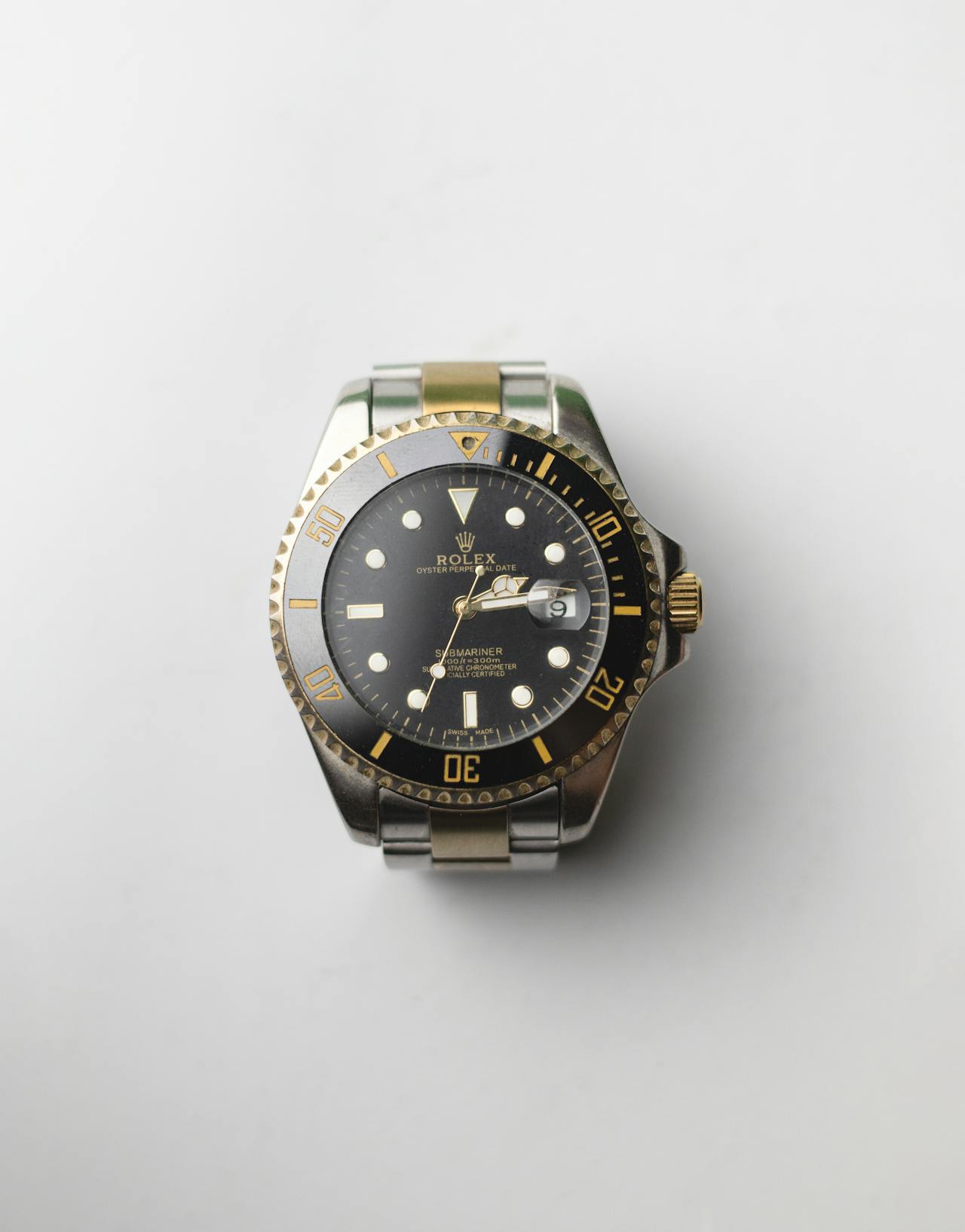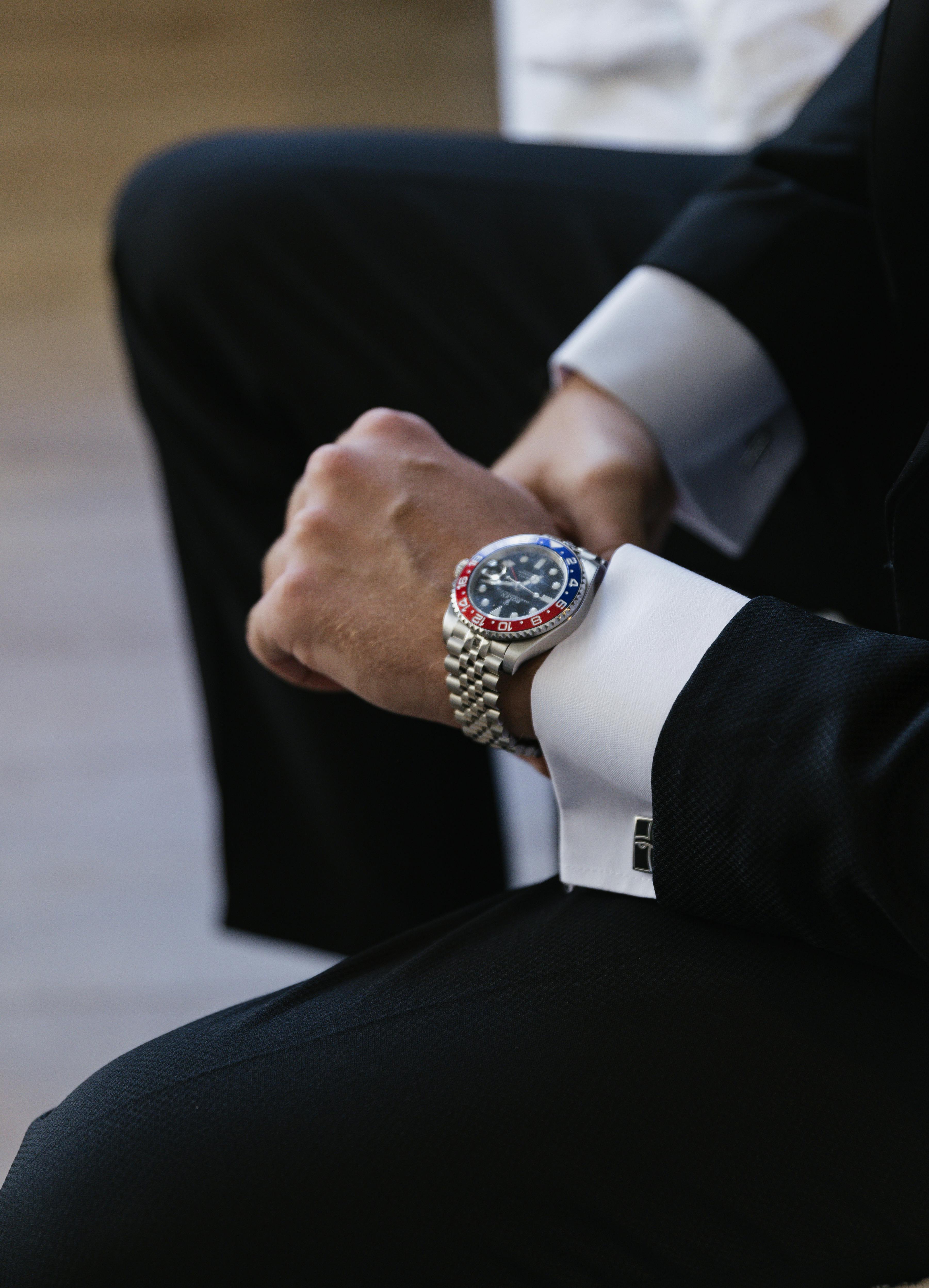Introduction

The Rolex Cosmograph Daytona stands as one of the most iconic and sought-after chronographs in watchmaking history. Named after the legendary Daytona International Speedway in Florida, this precision instrument has transcended its role as a tool watch to become a symbol of luxury, achievement, and horological excellence. This comprehensive lesson explores the complete journey of the Daytona from its inception to its current status as a modern icon.
Origins and Purpose (Early 1960s)
The Birth of a Racing Chronograph
The story of the Daytona begins not with the model itself, but with Rolex's earlier chronographs. Before the Daytona name was introduced, Rolex produced chronographs under references like the 6234 and 6238 (often called "Pre-Daytonas"). However, these early models lacked the tachymeter scale on the bezel that would become a defining characteristic of the Daytona.
In the early 1960s, motorsport was experiencing a golden age of popularity. Rolex, recognizing the potential market for a dedicated racing chronograph, redesigned their chronograph offering with specific features for timing racing events. The key innovation was moving the tachymeter scale (used to calculate average speed over a known distance) from the dial to the bezel, providing better legibility and a cleaner aesthetic.
The Daytona Name and Racing Connection
The watch was initially launched in 1963 as the "Rolex Cosmograph" (reference 6239). The "Daytona" name was added shortly after to emphasize the brand's connection to motorsport, specifically the Daytona International Speedway where Rolex had become the official timekeeper. The full "Cosmograph Daytona" designation highlighted both the chronograph functionality ("Cosmograph" being Rolex's term for their chronographs) and the racing heritage.
The purpose was clear: to provide racing drivers with a reliable, legible, and precise instrument for measuring elapsed time and calculating speeds. The watch featured three sub-dials for running seconds, 30-minute counter, and 12-hour counter, along with a tachymeter bezel calibrated to 200 or 300 units depending on the specific reference.
First Generation: Manual-Wind Daytonas (1963-1988)
Reference 6239 (1963-1969)
The first official Daytona, reference 6239, featured contrasting sub-dials (either white on black or black on white, creating the famous "panda" and "reverse panda" dials), pump pushers for the chronograph functions, and a metal bezel with an engraved tachymeter scale. This reference did not have screw-down pushers, meaning it had limited water resistance compared to later models.
References 6241, 6262, 6264 (1965-1972)
These references introduced variations including black acrylic bezels (on the 6241 and 6264) and improved movements (on the 6262 and 6264). The acrylic bezel models are particularly prized among collectors today for their distinctive appearance.
References 6263, 6265 (1971-1988)
The longest-running manual-wind Daytonas, these references introduced screw-down pushers (improving water resistance to 100 meters) and featured either acrylic bezels (6263) or metal bezels (6265). These models represented the evolution and refinement of the original concept.
The "Paul Newman" Dials
Perhaps the most famous variation of the manual-wind Daytonas are those fitted with what collectors now call "Paul Newman" dials. These exotic dials featured art deco-style numerals in the sub-dials, step markers, and a distinct outer track. Named after the famous actor and racing driver who wore one, these variants have become among the most valuable vintage watches in the world, with Newman's own 6239 selling for $17.8 million in 2017—setting a record for the highest price ever paid for a wristwatch at auction at that time.
Movements
All first-generation Daytonas were powered by manually wound Valjoux 72 movements (modified by Rolex and renamed as the Caliber 722 and later 727). These reliable workhorse movements were not Rolex in-house calibers, but they were carefully regulated and modified to meet Rolex's stringent standards.
Second Generation: Zenith Daytona (1988-2000)
The Automatic Revolution: Reference 16520/16523/16528
After 25 years of manual-wind Daytonas, Rolex finally introduced an automatic version in 1988. This represented a major technical upgrade, featuring the Zenith El Primero movement, one of the finest automatic chronograph movements available. Rolex heavily modified the El Primero, reducing its frequency from 36,000 vph to 28,800 vph and making over 200 additional modifications. The resulting caliber 4030 was more robust and maintainable while retaining the El Primero's excellent performance.
The second-generation Daytonas featured:
- Increased case size from 37mm to 40mm
- Sapphire crystal replacing acrylic
- Lacquered dials with applied indices
- Improved water resistance
- New bracelet design with solid end links
Available in stainless steel (16520), steel and gold two-tone (16523), and gold (16528), these models established the more modern aesthetic that continues in the Daytona line today.
The "Inverted 6" and Other Variations
Early second-generation Daytonas featured an inverted 6 in the "60" marker on the chronograph seconds sub-dial. Around 1994-1995, Rolex changed this to a standard upright 6, creating a subtle collector's distinction. Other variations included the rare "Floating Cosmograph" dial where the text appears to float further from other dial text, and the four-line "Patrizzi" dials that developed a distinctive bronze patina on the sub-dials due to a manufacturing quirk.
From Slow Seller to Waitlist Wonder
Interestingly, when first introduced, the automatic Daytonas were slow sellers and could often be found at discounts. However, by the mid-1990s, demand had increased so significantly that multi-year waiting lists became common at authorized dealers—a situation that continues to this day with current models.
Third Generation: In-House Movement Daytona (2000-Present)
Reference 116520/116523/116528 (2000-2016)

In 2000, Rolex achieved a significant milestone by introducing the first entirely in-house chronograph movement, the caliber 4130. This represented a major technical achievement for the brand and featured several important innovations:
- Reduced parts count (from 290 to 201) for improved reliability
- Vertical clutch instead of lateral clutch for smoother chronograph operation
- 72-hour power reserve
- More efficient self-winding system
- Enhanced shock resistance
- Better serviceability
The new movement was housed in a case that maintained the 40mm diameter of the previous generation but featured subtle refinements. Visual differences were minor, with slight modifications to dial layout (the running seconds sub-dial moved from 9 o'clock to 6 o'clock) and proportions.
Reference 116500LN and Modern Variants (2016-Present)
In 2016, Rolex introduced what would become one of the most desirable watches in the modern market: the reference 116500LN with a Cerachrom (ceramic) bezel. This innovation provided superior scratch resistance and color longevity compared to the previous metal bezels. The ceramic bezel had already appeared on precious metal Daytonas (introduced in 2011), but its application to the stainless steel model created unprecedented demand.
Current Daytona references include:
- 116500LN: Stainless steel with ceramic bezel
- 116503: Two-tone (steel and yellow gold) with metal bezel
- 116505: Rose gold with metal bezel
- 116508: Yellow gold with metal bezel
- 116509: White gold with metal bezel
- 116518LN/116519LN: Gold on Oysterflex rubber bracelet with ceramic bezel
- 116595RBOW, 116598RBOW: Various "Rainbow" editions with gem-set bezels
Special Editions and Variations
Throughout the third generation, Rolex has released numerous special variations, including:
- Models with exotic stone dials (meteorite, mother of pearl)
- "Beach" dial variants with special color patterns
- Various gem-set editions
- The "Rainbow" Daytonas with carefully gradient-colored sapphires set in the bezel
- Platinum models with ice blue dials and brown ceramic bezels
- The John Mayer "Eye of the Tiger" gold model with special diamond dial
The Role of Celebrities and Racing Heritage
Paul Newman
As mentioned earlier, actor and racing driver Paul Newman's association with the Daytona created the most valuable subset of vintage Daytonas. His personal watch became the stuff of legend when it resurfaced after decades and sold for a record price.
Other Notable Collectors
Over the years, numerous celebrities have been associated with the Daytona, including:
- John Mayer (musician and watch collector who has popularized certain references)
- Eric Clapton (owns several rare Daytonas)
- Ellen DeGeneres (known to have an extensive Daytona collection)
- Victoria Beckham (frequently photographed wearing a gold Daytona)
- Jay-Z (owns several high-end Daytonas)
Continued Racing Connection
Throughout its history, Rolex has maintained the Daytona's connection to motorsport. The brand continues to serve as the official timekeeper at the Daytona International Speedway and sponsors the Rolex 24 At Daytona endurance race. Winners of this prestigious 24-hour race receive a special engraved Daytona watch, reinforcing the model's authentic racing pedigree.
Collecting and Investment Significance
Market Dynamics
The Rolex Daytona has become one of the most sought-after watches on both the retail and secondary markets:
- Stainless steel models frequently command 2-3 times their retail price on the secondary market
- Vintage manual-wind references have appreciated dramatically over the past two decades
- "Paul Newman" variants have become blue-chip investments in the watch collecting world
- Even modern references are nearly impossible to purchase at retail without an extensive purchase history
Identifying Authentic Pieces

Given the high values, the Daytona market is unfortunately plagued by counterfeits and "Frankenwatches" (watches assembled from parts of different watches). Key authentication points include:
- Precision of printing on the dial
- Quality of finishing on movement components
- Correct serial number ranges for specific references
- Proper bracelet codes and engravings
- Appropriate aging patterns on vintage pieces
Experts recommend purchasing important pieces only from reputable dealers who offer proper authentication and history.
Technical Specifications Across Generations
First Generation (Manual Wind)
- Diameter: 37mm (excluding crown)
- Movement: Valjoux 72-based Caliber 722/727
- Power Reserve: Approximately 46 hours
- Water Resistance: Initially minimal, later improved to 100m with screw-down pushers
- Crystal: Acrylic
Second Generation (Zenith Movement)
- Diameter: 40mm
- Movement: Modified Zenith El Primero (Rolex Caliber 4030)
- Power Reserve: Approximately 54 hours
- Water Resistance: 100m
- Crystal: Sapphire
Third Generation (In-House Movement)
- Diameter: 40mm
- Movement: Rolex Caliber 4130
- Power Reserve: 72 hours
- Water Resistance: 100m
- Crystal: Sapphire
- Certification: Superlative Chronometer (COSC + Rolex certification)
The Innovation Timeline
To summarize the key innovations in the Daytona's evolution:
1963: Introduction of the first Cosmograph with tachymeter bezel 1965: Addition of black acrylic bezel option 1971: Introduction of screw-down pushers for improved water resistance 1988: Transition to automatic movement and modern case design 2000: Introduction of in-house chronograph movement 2011: First ceramic bezel on precious metal models 2016: Ceramic bezel introduced on stainless steel models 2017: Introduction of Oysterflex bracelet option
Conclusion
The Rolex Daytona represents over 60 years of continuous evolution and refinement of a singular vision: creating the ultimate racing chronograph. From its humble beginnings as a specialized tool watch to its current status as one of the most desirable luxury timepieces in the world, the Daytona's journey mirrors the transformation of mechanical watches from everyday tools to objects of passion and collecting.
What makes the Daytona particularly fascinating is how it has maintained its essential character and purpose despite these transitions. The core DNA—three contrasting subdials, tachymeter bezel, and robust construction—remains intact from the earliest 6239 to today's ceramic-bezeled models. This consistency, combined with Rolex's uncompromising approach to quality and incremental improvement, has created a horological icon that transcends trends and continues to captivate new generations of enthusiasts.
Whether appreciated for its technical merits, its racing heritage, its investment potential, or simply its timeless design, the Rolex Cosmograph Daytona has earned its place as one of the defining timepieces in watchmaking history.





Leave a comment
This site is protected by hCaptcha and the hCaptcha Privacy Policy and Terms of Service apply.